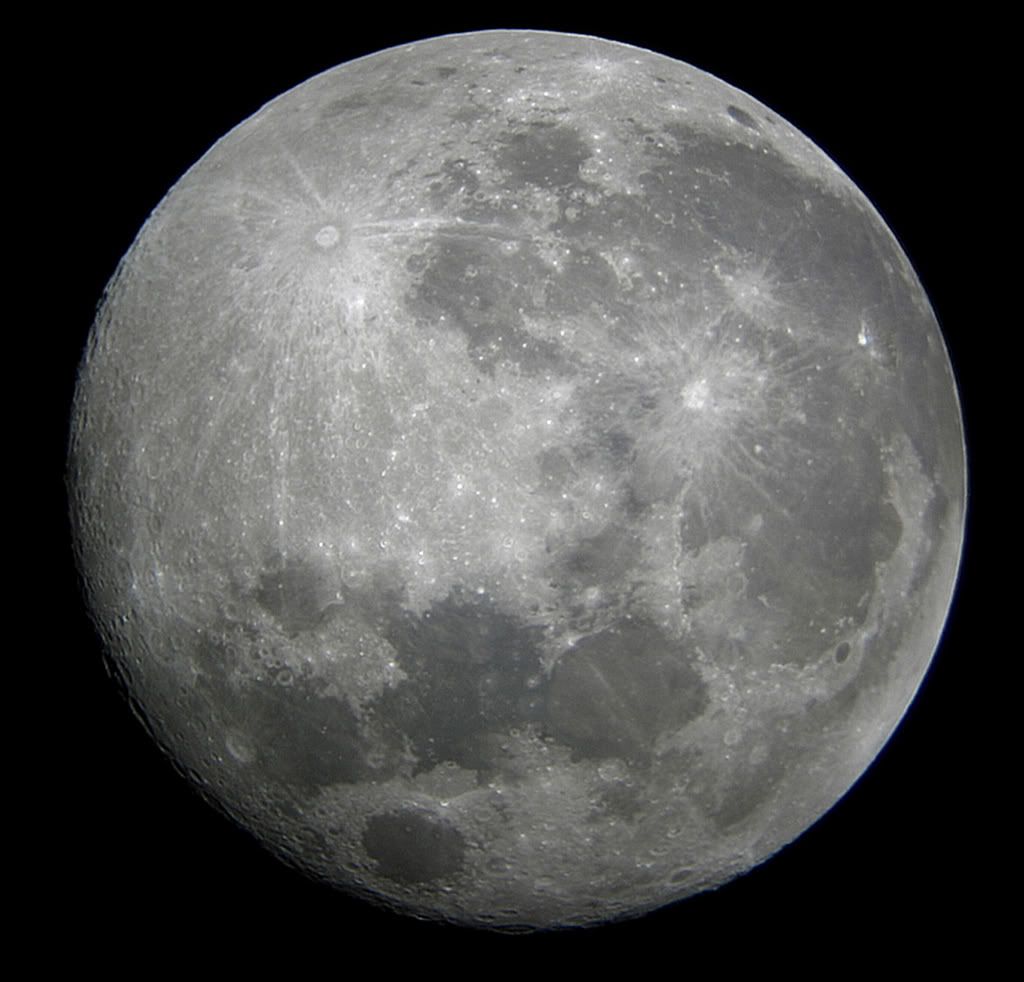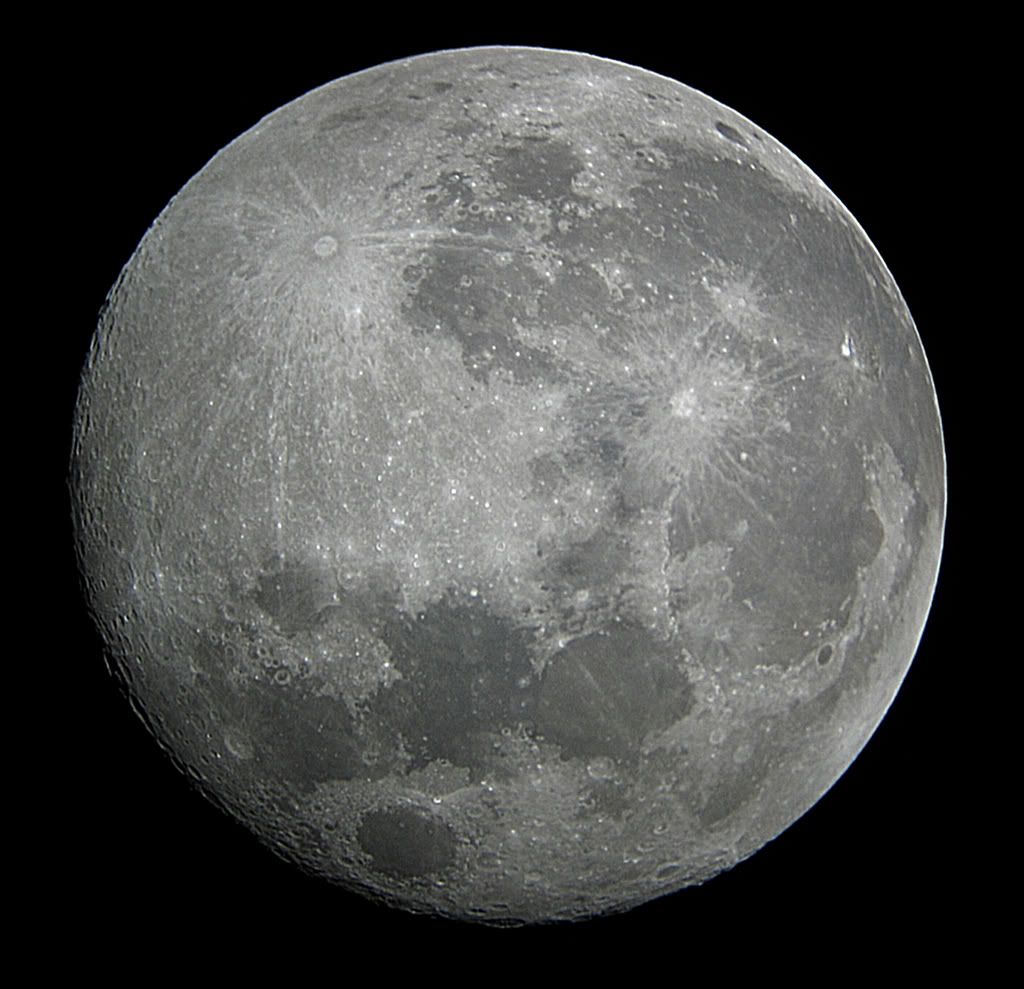These are my latest images. These were taken with a 5" Mak Cassegrain Telescope from the rooftop 18 floors up on the building that I live in. This was the first time venturing up there but I get great views from horizon to horizon. Best of all I get views of Polaris so I can do a polar allignment of the scope for short exposure unguided deepsky shots ranging from 30 seconds to 1 minute exposure before trailing is evident. Shots were taken on April 22 2007 under very light polluted skies and somewhat hazy skies. One dissapointing thing that I learned was that the Digital Rebel XT DSLR is much less sensitive to low light conditions then the canon G3 even at ISO1600! What I could get in a 15 second exposure on the G3 at ISO400 (max exposure possible) I couldn't even get in a 30 second exposure at ISO1600 on the digital rebel XT!!! However, despite this, the noise on the G3 is much more evident on ISO400 then the noise on the XT on ISO1600. I expected the XT to be less sensitive to low light then the G3 because the G3 utilizes a CCD (Charged Coupled Device) chip while the XT utilizes a CMOS (Complementary metal–oxide–semiconductor) chip which is less sensitive. The CMOS does not suffer from noise as much as the CCD. What I didn't expect was how much less sensitive the CMOS would be which means I will require much longer exposures thus limiting the objects I can photograph unless i get a better mount and guiding equipment either of which I can't afford at the moment.
For the lunar shots I am finding the Rebel XT DSLR to be harder to control and suffers from shudder lag. I am starting to be able to get around this problem and the images it is providing seem to be better and less noisy then my canon G3. In time I am confident that once I get the hang of my DSLR for lunar and planetary shots, I will be able to take MUCH MUCH better shots then my G3 but as of now I am in the learning stages and my G3 shots are almost better (focus wise and so on) then my DSLR. For deepsky shots, unless I get get a better mount and guiding equipment, unfortunately my G3 will be better which is too bad because I bought the digital Rebel XT because I don't have a limit on the exposure times since i have a B-setting while my G3 can only do a max of 15seconds.
Well here are my latest images! PS: Images are large so that the most detail can be seen so please give them time to upload if you have a slow connection. Please scroll to the right to see the full image in the sky shots.
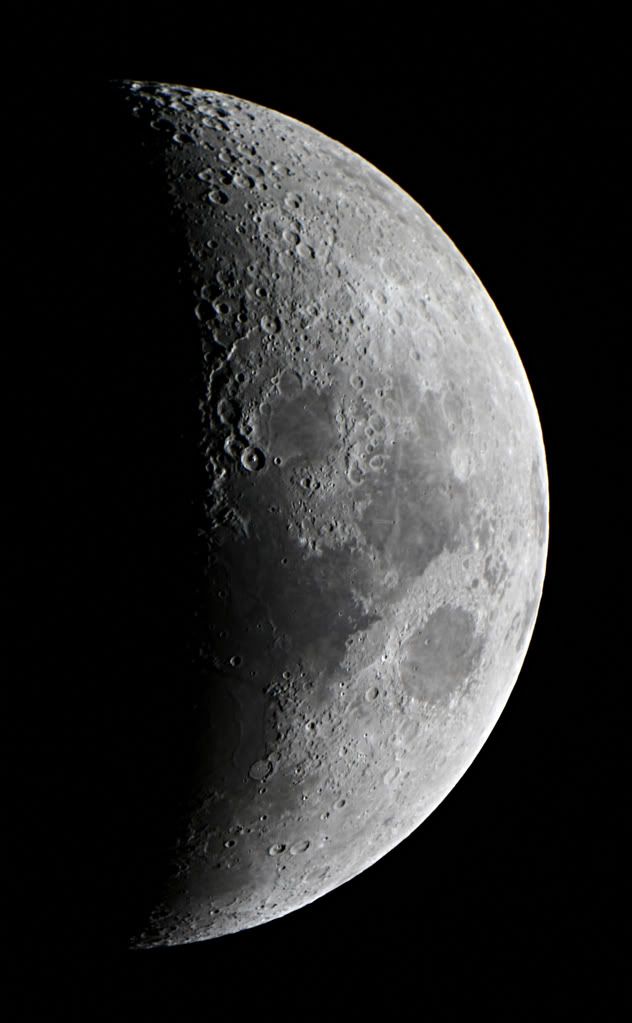
The Moon taken at prime focus with a Digital Rebel XT DSLR and a 5" MCT telescope. 8 Stacked images with an exposure of 1/10 sec @ ISO100 each. Images were staked manually in photoshop using the layers and difference option.
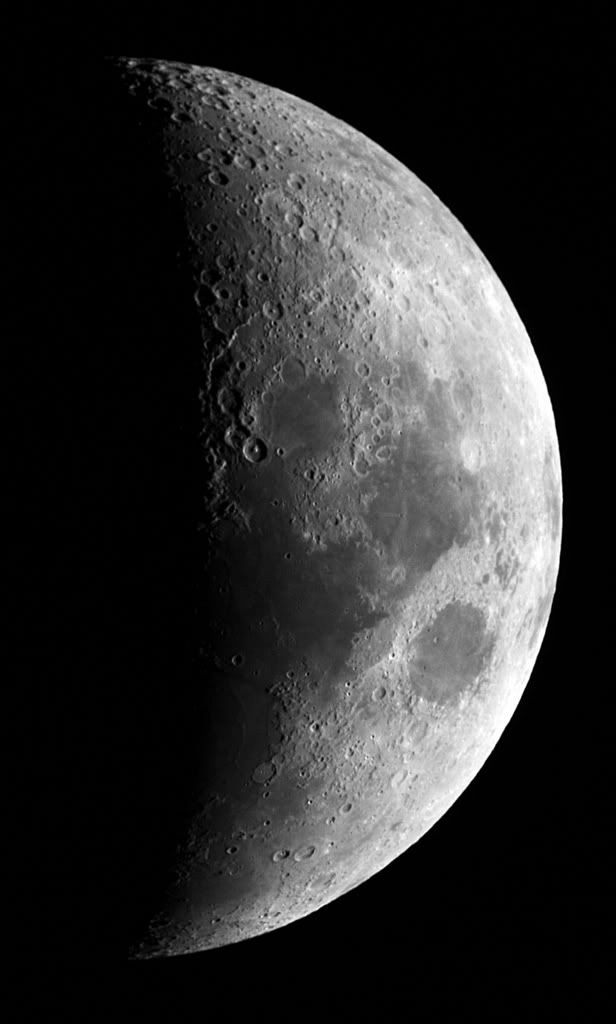
The Moon taken at prime focus with a Digital Rebel XT DSLR and a 5" MCT telescope. 16 Stacked images with an exposure of 1/60 sec @ ISO400 each. Images were staked manually in photoshop using the layers and difference option.
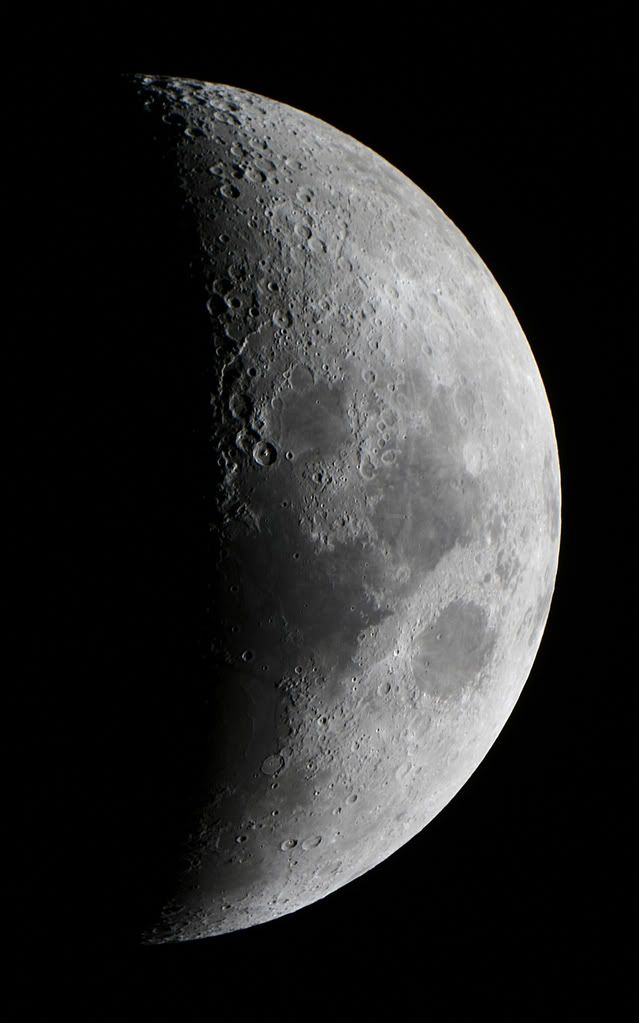
The Moon taken at prime focus with a Digital Rebel XT DSLR and a 5" MCT telescope. 4 Stacked images with an exposure of 1/10 sec @ ISO100 each. Images were staked manually in photoshop using the layers and difference option.

The Moon taken with a Canon Poweshot G3 digital camera attached to a Scopetronix Maxview 40 Plossal and a 5" MCT telescope. 8 stacked images at 1/250 second exposure @ ISO50 and f2.8. 1 X zoom was used. Images were stacked manually in photoshop using the layers and difference methods.
SKY SHOTS WITH THE DIGITAL REBEL XT DSLR CAMERA
These shots were taken later on that night with my camera attached to the tripod. The tripod was polar aligned so I was able to do unguided shots close to 200-250 seconds each before seeing trailing. Unfortunately the exposure was limited to much less exposure then 200 seconds due to haze, the moon light and light pollution from the city below. High thin clouds were rolling in by this time which were illuminated by the moon and the city lights so I was quite happy with these shots despite the horrible conditions. I will have to try more shots on a moonless and very clear night next time.
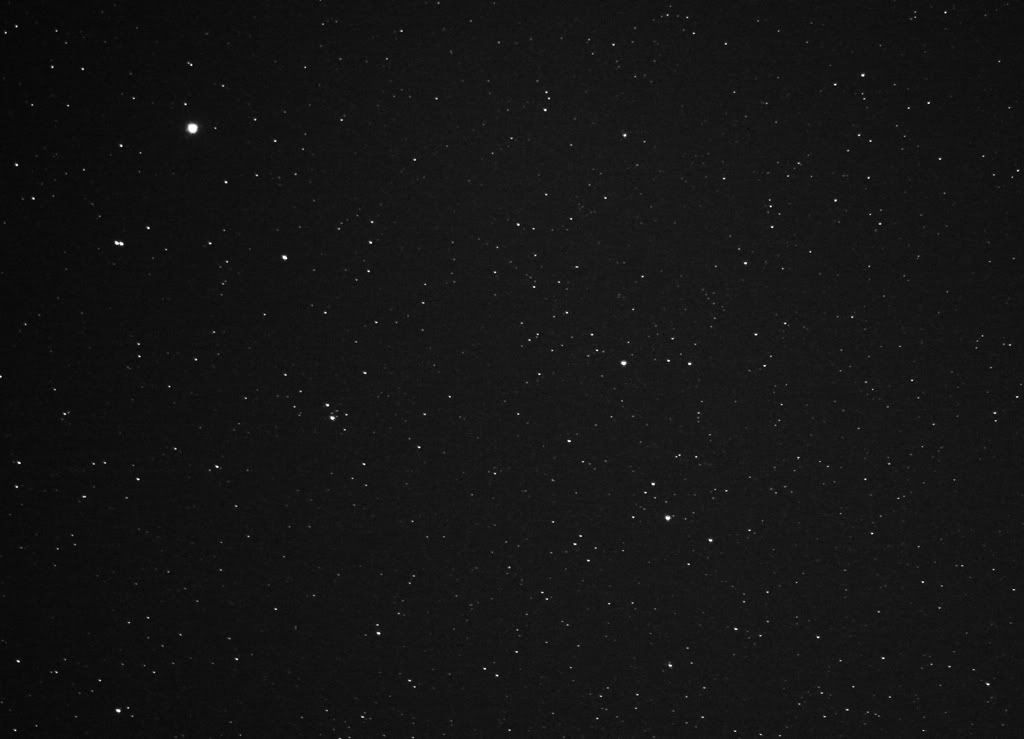
The constellation of Lyra taken with a Canon Digital Rebel XT DSLR mounted on top of an Orion skiview mount. One single unstacked and unguided image. Noise reduction was done on image by adding a dark frame (done automatically with the noise reduction feature on the camera itself). Image is a 67 second exposure @ ISO 400 and taken with an 18-55mm EF canon lens set at 55mm and at F5.6.
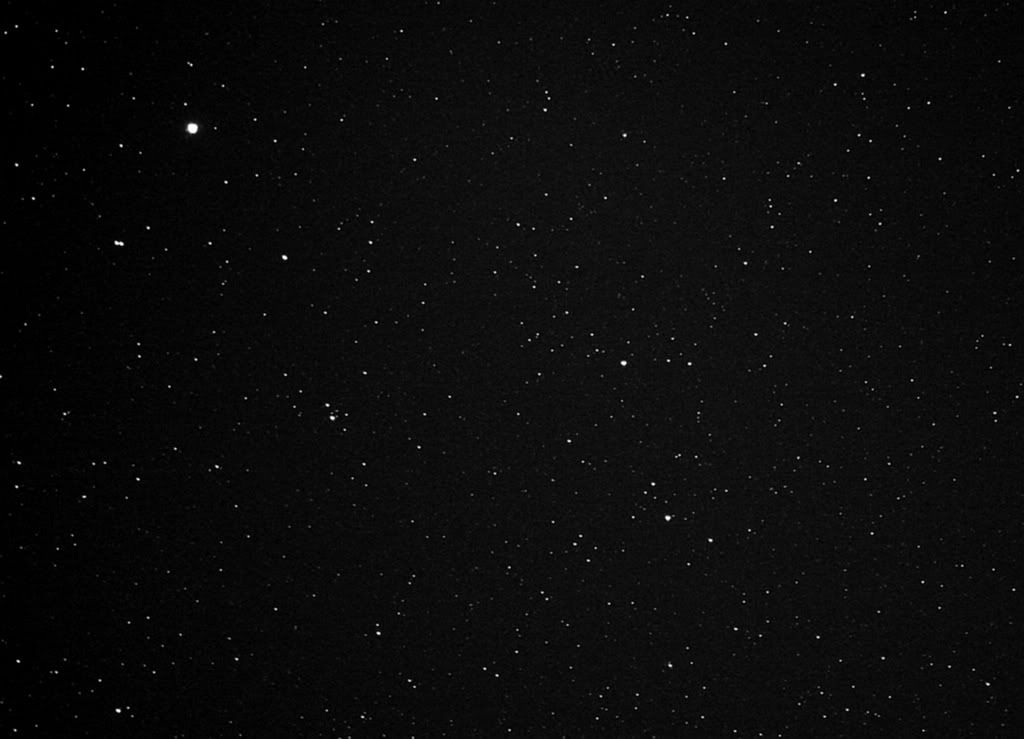
The constellation of Lyra. Same equipment and settings as above just different processing in photoshop and imageJ.

The starfields of Cygnus (M29 is barely visible near center of image but nicely visible in original un-resized image). Taken with a Canon Digital Rebel XT DSLR camera and an 18-55mm Canon EF lens mounted on top of an Orion Skiview mount. One single, unstacked and unguided image. Noise reduction was done on image by adding a dark frame (done automatically with the noise reduction feature on the camera itself). Image is a 143 second exposure @ ISO 100 and taken with the lens at 55mm and at F5.6.

The starfields of Cygnus (M29 is barely visible near center of image but nicely visible in original un-resized image). Taken with a Canon Digital Rebel XT DSLR camera and an 18-55mm Canon EF lens mounted on top of an Orion Skiview mount. One single, unstacked and unguided image. Noise reduction was done on image by adding a dark frame (done automatically with the noise reduction feature on the camera itself). Image is a 81 second exposure @ ISO 400 and taken with the lens at 55mm and at F5.6.
 Comet Holmes taken with an 80mm refractor and a Canon DSLR camera. 236 seconds total exposure at ISO 1600 (4 x 59 sec)
Comet Holmes taken with an 80mm refractor and a Canon DSLR camera. 236 seconds total exposure at ISO 1600 (4 x 59 sec) This is the raw image and the processed image. This just comes to show that processing is almost as important as acquiring the image!
This is the raw image and the processed image. This just comes to show that processing is almost as important as acquiring the image!










































